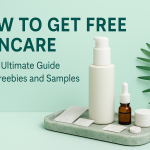A radiant complexion begins with a solid skincare routine. Whether you’re a skincare newbie or looking to refine your regimen, understanding the right steps and products can make all the difference in achieving healthy, glowing skin. In this comprehensive guide, we’ll walk you through how to do a skincare routine tailored to your needs, including expert tips and product recommendations.
Why a Skincare Routine Matters
Your skin is the largest organ in your body and serves as the first line of defense against environmental stressors, pollution, and harmful bacteria. A proper skincare routine does more than just improve your appearance—it supports skin health, prevents premature aging, and addresses specific skin concerns such as acne, dryness, or sensitivity.
- Consistency: Regular care yields visible, long-lasting results.
- Prevention: Protects against environmental damage and signs of aging.
- Targeted Treatment: Helps address and manage specific skin issues.
Understanding Your Skin Type
Before selecting skincare products or starting a regimen, it’s crucial to know your skin type. The five main skin types are:
- Normal: Well-balanced, not too oily or dry.
- Oily: Prone to excess sebum and shine, usually with visible pores.
- Dry: Feels tight, may be flaky or rough.
- Combination: Oily in some areas (usually the T-zone), dry or normal in others.
- Sensitive: Easily irritated, prone to redness and discomfort.
Choose products formulated for your specific skin type to maximize the benefits and minimize irritation.
Essential Skincare Routine Steps
A basic skincare routine consists of three fundamental steps: cleansing, moisturizing, and protecting. Additional steps can be added based on individual needs and preferences.
1. Cleansing
Cleansing removes dirt, oil, sweat, and makeup from your skin, preventing clogged pores and breakouts.
How to Cleanse:
- Morning: Use a gentle cleanser suitable for your skin type to remove overnight sweat and oil.
- Evening: Consider double cleansing if you wear makeup or sunscreen. Start with an oil-based cleanser to dissolve makeup, followed by a water-based cleanser for a thorough clean.
Tip: Avoid harsh soaps and hot water, as they can strip natural oils and damage your skin barrier.
2. Toning
Toners help balance your skin’s pH and prepare it for better absorption of subsequent products.
- Apply toner with a cotton pad or pat gently onto your face with clean hands.
- Choose alcohol-free formulas for sensitive or dry skin.
3. Treatment Serums
Serums are concentrated solutions targeting specific concerns such as acne, hyperpigmentation, or fine lines.
- Vitamin C: Brightens skin and combats free radicals.
- Hyaluronic Acid: Deeply hydrates and plumps the skin.
- Retinol: Supports cell turnover and reduces signs of aging (use at night and start gradually).
- Niacinamide: Balances oil production and soothes irritation.
Apply a few drops after toning and before moisturizing.
4. Eye Cream
The delicate skin around your eyes can benefit from targeted care to reduce puffiness, dark circles, or fine lines.
- Use your ring finger to gently tap the cream around your eye area.
- Choose products based on your primary concern (e.g., brightening, anti-aging).
5. Moisturizing
Hydration is key for all skin types. Moisturizers lock in moisture, support the skin barrier, and keep skin soft and supple.
- Oily Skin: Choose lightweight, oil-free gels or lotions.
- Dry Skin: Opt for richer creams and ointments.
- Normal/Combination Skin: Use a balanced moisturizer that isn’t too heavy or greasy.
6. Sun Protection (Morning Only)
Applying sunscreen is a non-negotiable step in every morning skincare routine. UV rays can accelerate aging and increase the risk of skin cancer—even on cloudy days.
- Choose a broad-spectrum SPF 30 or higher.
- Apply generously as the last step in your morning routine.
- Reapply every two hours when outdoors.
Additional Skincare Steps & Weekly Treatments
To further enhance your routine, consider incorporating these steps once or twice a week:
- Exfoliation: Removes dead skin cells and promotes cell renewal. Use chemical exfoliants (AHAs/BHAs) or gentle physical scrubs, but avoid over-exfoliating to prevent irritation.
- Masks: Sheet masks, clay masks, or hydrating masks deliver targeted treatment for dryness, oiliness, or dullness.
How to Do a Skincare Routine: Sample Morning & Night Regimens
Morning Skincare Routine
- Cleanser
- Toner (optional)
- Serum (e.g., Vitamin C)
- Eye Cream (optional)
- Moisturizer
- Sunscreen (broad-spectrum, SPF 30+)
Night Skincare Routine
- Makeup Remover / Oil Cleanser (if wearing makeup)
- Water-Based Cleanser
- Toner
- Treatment Serum (e.g., retinol or hyaluronic acid)
- Eye Cream
- Moisturizer
- Spot Treatments (as needed)
Tips for Sticking to Your Skincare Routine
- Start Simple: Build consistency with a basic routine, then introduce new products gradually.
- Patch Test New Products: Test on a small area to check for reactions before full use.
- Be Patient: It can take weeks to see noticeable results; avoid switching products too quickly.
- Listen to Your Skin: Adjust your routine based on seasonal changes or evolving skin needs.
- Stay Consistent: Morning and night routines help you see the best results.
Common Skincare Routine Mistakes to Avoid
- Skipping sunscreen, especially on cloudy days.
- Over-exfoliating, causing irritation and sensitivity.
- Using products not suited for your skin type.
- Applying products in the wrong order (stick to thinnest to thickest texture).
- Not removing makeup before bed.
Conclusion: Build Your Personalized Skincare Routine
Creating an effective skincare routine is about understanding your skin’s unique needs and being consistent with your regimen. Start with the basics, tailor your products, and listen to your skin’s responses for optimal results. With time, patience, and the right steps, you’ll achieve healthy, glowing skin that looks and feels its best.
Always consult a dermatologist if you have persistent skin concerns or specific conditions.


